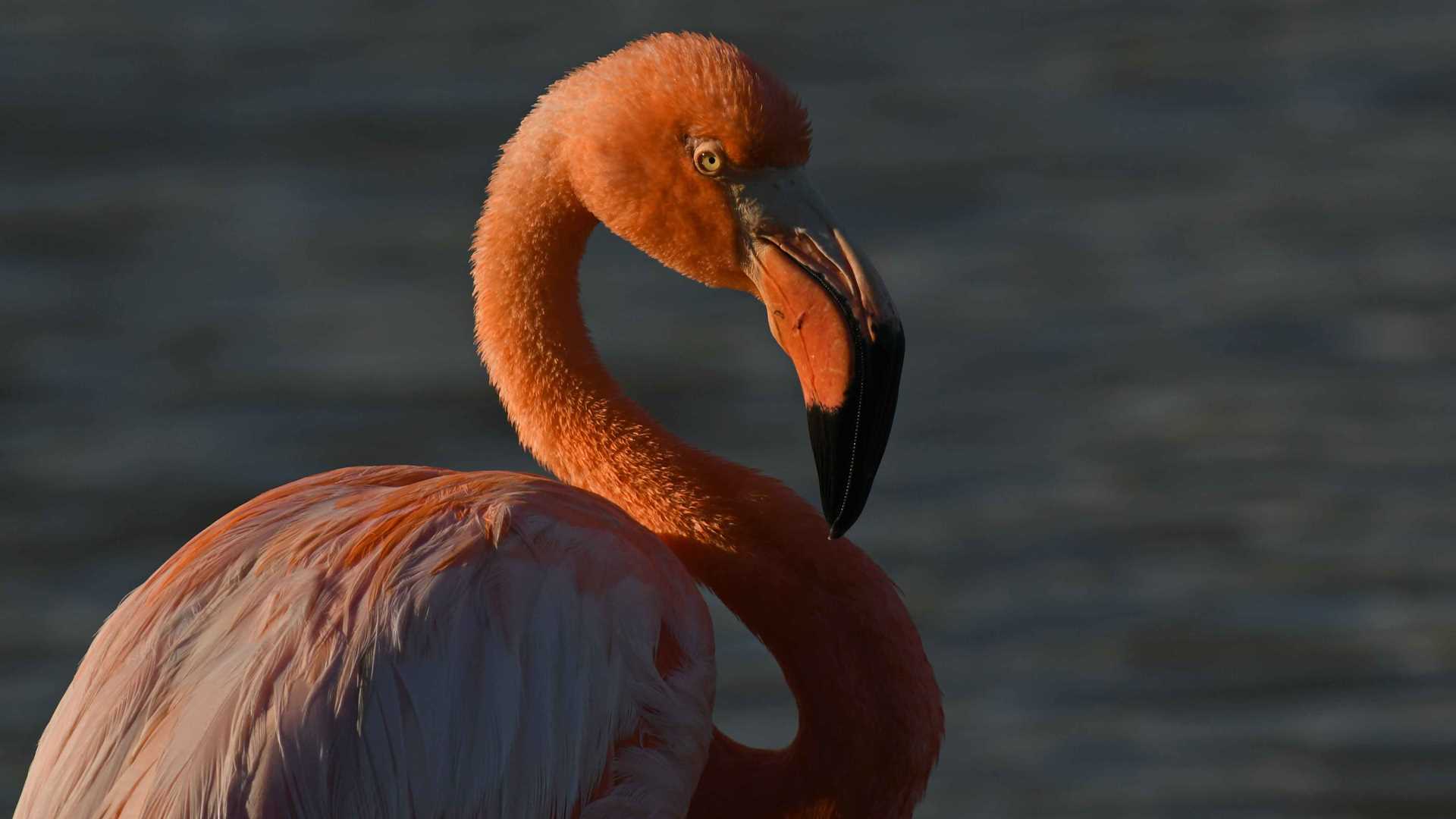May is a month of transition in the weather condition of Galapagos, rain is absent and a chilly wind starts to blow. This time we are at Floreana, the most historical island of Galapagos. Here, The Ecuadorian government claimed the island almost 200 hundred years ago, in 1832. Floreana is also the island where the first man lived in 1790 as Robinson Crusoe; He was Patrick Watkins, an Irish man.
At 6:15 am, with a beautiful sunrise we started our exploration at Punta Cormorant. We had a wet landing on a small beach which color is greenish because the big quantity of olivine. There, few sea lions were playing actively; behind the beach is a big brackish water lagoon, as soon we arrived there we spot about 50 flamingos doing different tasks; some of them were mating, they have several movements to mate that synchronized in a very accurate way. Other were climbing rocks out of the water to build nests; they built them with mud like a castle shape; some other flamingos were just eating on the very nutritious ooze, which is plenty of shrimps.
What was unique is to spot an intruder from Chile, greater flamingos are endemic to Galapagos but in the middle of the flock was Chilean flamingo that probably arrived weeks ago from that far spot, we guest it traveled more than 7 thousand kilometers to finally arriving to Galapagos to stay with new friends.
Along the coast, we find few blue footed Bobbies mating and in land many types of Darwin finches.
Later we came back on board to have breakfast and then after to go to explore Champion Islet on our zodiacs. In Galapagos we four species of mocking birds, so today we were lucky of finding couple of Floreana mockingbirds that are endangered of extinction. Champion Islet is a nice place to spot many types of se birds such as noddy terns, Nazca boobies, red-billed tropicbirds, petrels, sea gulls and colonies of sea lions playing in the water.
Snorkeling was also fabulous around the islet; there a big biodiversity of fish and marine wildlife, our intrepid guests enjoyed it.
In the afternoon we moved to visit post office bay, here started the colonization of Galapagos many years ago, and there are many legends, stories of tragedies and mysteries. In 1970, a person called James Colnet placed there a wooden barrel used as mailing system among the people of that era, nowadays our visitors still using this old mailing system that was the first one in South America at that time. The coast of Post office bay is astonishing and we went to explore it by kayak, paddle boarding and zodiac rides; some guests preferred to stay at the beach for snorkeling with stingrays and marine turtles.
After all these choices, we came back on board for more activities. We went to the sundeck around 5.40 pm to observe the sunset, to enjoy wines from different places of South America and as soon the sun was gone, one of our expert guests offered to all of us a great start gazing to learn more about the constellations you can see from this unique place on earth: The equator.







